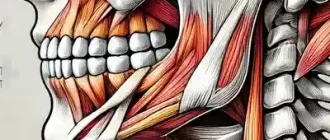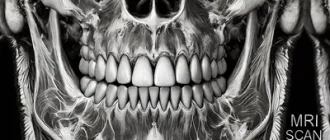Toothache is a common health concern experienced by individuals of all ages worldwide. However, it may surprise some to learn that, occasionally, these aches occur even when there’s no visible hole in the tooth. This situation often leaves people with a critical question: “Why does my tooth hurt if I don’t see a cavity or hole?”
Causes of Toothache with No Visible Hole or Cavity
- Tooth Sensitivity – Often, toothache without a hole could be due to tooth sensitivity. This is triggered when the tooth’s enamel wears down or the gum line recedes, exposing the tooth’s inner layer.
- Cracked Tooth – Even the tiniest crack on a tooth might not be visible to the naked eye, but it can still cause considerable toothache. Chewing or biting can put pressure on the crack, causing sharp pain.
- Sinus Infection – Bizarre as it may seem, a sinus infection can indeed lead to toothache. It happens because the roots of your top teeth are near your sinus cavities, and sinus pressure can cause discomfort in your teeth.
- Gum Disease – Gum disease (gingivitis or periodontitis) often leads to inflamed and sensitive gums, which can cause toothache even if there isn’t a visible hole in the tooth.
- Bruxism – This is also known as teeth grinding which happens mostly during sleep. This can cause toothache, jaw discomfort, and even headaches.
- Impacted Wisdom Teeth – An impacted wisdom tooth growing at an awkward angle or failing to fully emerge can lead to unwanted pressure on other teeth, resulting in a toothache.
| Causes of Toothache | Explanation |
|---|---|
| Tooth Sensitivity | Triggered when tooth’s enamel wears down or gum line recedes. |
| Cracked Tooth | A tiny, unnoticeable crack can cause sharp pain. |
| Sinus Infection | Sinus pressure can lead to tooth discomfort. |
| Gum Disease | Inflamed and sensitive gums often lead to toothache. |
| Bruxism (Teeth Grinding) | Unconscious teeth grinding can cause toothache, jaw discomfort, and headaches. |
| Impacted Wisdom Teeth | An awkwardly growing wisdom tooth can exert pressure on other teeth causing a toothache. |
How to Determine If You Have a Hole in Your Tooth
Identifying the existence of a cavity at an early stage plays a vital role in averting additional harm and promptly pursuing treatment. In the following text, we will provide you with information on specific indications and symptoms that can assist in determining whether or not you possess a cavity.
- Tooth Sensitivity:
Tooth sensitivity is often one of the first signs of a cavity. If you feel a sudden or increased sensitivity to hot, cold, sweet, or acidic foods and drinks, it could indicate tooth decay. This sensitivity occurs because the inner dentin layer of the tooth is exposed and becomes more susceptible when there is a cavity. - Toothache:
A frequent or pulsating toothache is also a typical indication of a cavity and tiny hole in your tooth. Typically, the discomfort arises when the cavity has advanced and has reached the inner parts of the tooth where nerves are exist. If you experience a continuous, intense pain in a particular tooth, it is recommended to make a dental appointment. - Visible Discoloration or Dark Spots:
Examining your teeth visually can aid in the identification of dental problems such as cavities. The presence of dark spots or changes in color on a tooth’s surface is frequently a sign of decay. The color of these spots can vary from light brown to black, indicating the existence of bacteria and plaque responsible for the cavity. - Bad Breath:
While there can be various causes for bad breath, persistent foul breath may hint at an underlying dental problem. Bacteria that thrive in cavities produce odorous substances, leading to unpleasant breath. If despite regular oral hygiene practices, your breath remains consistently unpleasant, it may be time to consult your dentist. - Rough Edges or Broken Areas:
Physical abnormalities in the tooth’s structure can also indicate a cavity. Run your tongue gently along your teeth and check for rough edges, pits, or missing sections. Cavities erode the enamel, causing the affected area to become weak and resulting in irregularities or holes.
Conclusion
A toothache without a visible hole or cavity should never be ignored as it could be signaling other underlying dental problems. Always reach out to a dental professional if you experience persistent or severe toothache. They can conduct a thorough examination to determine the cause and recommend the best possible treatment.




